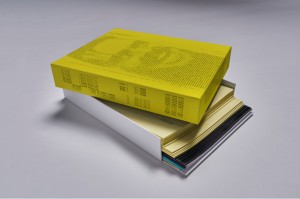“It doesn’t interest me just to build buildings…” The Big Interview: Daniel Libeskind
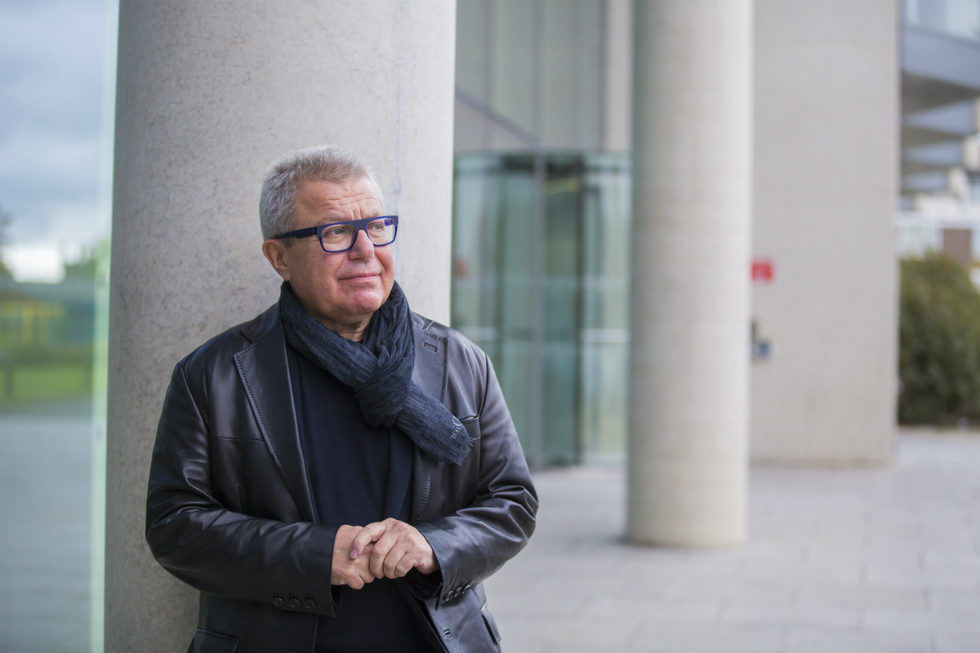
Referencing human experiences, Le Corbusier and deconstructivism (maybe): Alex Croll meets the architectural titan behind some of the world’s most empathetic buildings…
Read through any brief biography of Daniel Libeskind — the man who created the new World Trade Centre site in New York, the Jewish Museum in Berlin and Manchester’s Imperial War Museum — and you’ll come across the word ‘deconstructivism’. Despite holding a seemingly ambassadorial role for this particular architectural style, and is often the case with words that try to file creatives into a certain box, it’s not a term he’s particularly fond of. Libeskind is quick to respond to my mention of deconstructivism, as if it is something he’s tried many times to denounce.
“The word,” he tells me, “as you know, comes more from the world of philosophy and from literary criticism, from law, from sociology, from many other disciplines, so I always thought that it was not really a very good word for architecture, because architecture, if anything, doesn’t really deconstruct — it constructs things.”
I meet Libeskind at the Liverpool School of Art and Design; he’s here to deliver a special charity lecture on his inspirations, plus the latest developments from his studio. And, it turns out, to discuss deconstructivism with me… Libeskind was first associated with the term in the late 1980s when he was part of Deconstructivist Architecture: a groundbreaking exhibition at the Museum of Modern Art that was, he proudly tells me, only the second ever architecture exhibition to be held in the venue. Libeskind’s work was shown alongside that of megalodons Peter Eisenman, Rem Koolhaas, Frank Gehry and Zaha Hadid. The exhibition title was chosen by the late, great US architect Philip Johnson and has stayed with Libeskind ever since; like a nickname given to him in school that he can’t seem to shrug off.
And it’s fitting. For many years, Daniel Libeskind was unknown to all except those in the right academic circles, choosing to teach rather than build. It seems that this dedication to education has instilled the architect with a certain kind of mindset: one that’s attuned to the more theoretical and wondrous side of the profession, rather than to just form-making or aesthetics – unlike, arguably, many of his contemporaries. Or as he puts it: “It doesn’t interest me just to build buildings.”
I ask him about this teaching period, wondering how much effect is has had on his approach to architecture? “It took me a very long time until I built my first building, but perhaps that’s not something bad. People really rush to apprentice themselves and get as quickly as possible to do something. I think it’s important to have a more philosophical approach to anything; which is to think about it before you do it.”
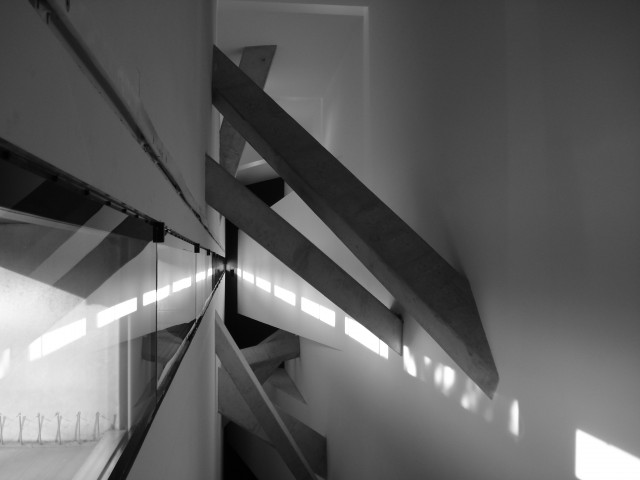
When Libeskind eventually emerged into the spotlight, he brought along with him a clearly defined set of values, which to some extent have been visible in all of his projects to date.
His first project was the Jewish Museum Berlin, winning the competition in 1989 — just months before the collapse of the Berlin Wall — with a brave and unorthodox proposal; a sharp, zinc zigzag juxtaposed against the Baroque backdrop of its neighbours. The reunification of Germany that was to begin in the following months proved to be costly and almost brought the project to a halt on a number of occasions. Libeskind stood firm, bolstered by his wife, partner and chief negotiator Nina, who used the expertise gained from her background in politics in bringing the museum’s struggles to the media’s attention around the world.
However, the troubles with the Jewish Museum Berlin didn’t end upon its completion. It opened to the public in 1999 as an empty shell, with its collection still buried somewhere beneath the bureaucracy of the crumbled Wall. A nightmare for the museum’s curator, but I wonder whether at this stage Libeskind was able to call it a success?
“My idea was that the building should be able to tell a story with whatever exhibitions are in it… In itself, the space, the light, its proportions, how it is formed, structured, has to be able to tell something.” During its first ‘empty’ year, 350,000 people visited the museum, seeing it exactly how Libeskind had intended: “They weren’t puzzled, they understood something just through walking and the experience of being in the building.”
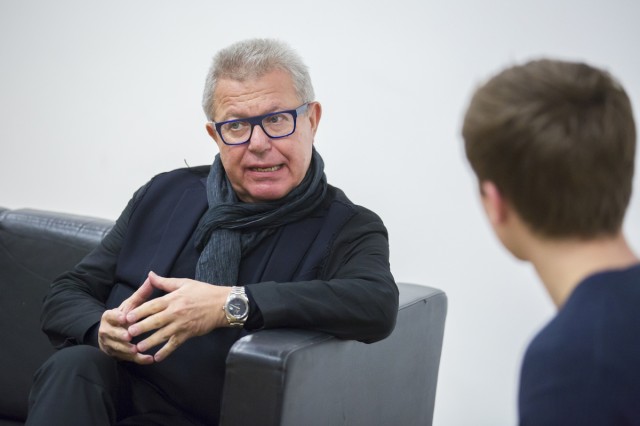
This was to be a continual theme, with Libeskind’s work demonstrating an empathetic quality, immersing visitors into spatial experiences representative of the building’s subject. The main exhibition space at Libeskind’s Imperial War Museum North has a gently sloping floor — a height difference of over two metres between its ends — creating a permeating disorientation akin to that experienced during times of warfare.
Libeskind famously came up with form for the Imperial War Museum’s curving, aluminium-clad shards after dropping a teapot from a first floor window in his Berlin office and gathering the pieces: an act that secures his place in the history books somewhere between Galileo and Ai Wei Wei. The three shards are named after the elements: the convex EarthShard houses the main exhibition space; the AirShard stands upright and is a semi-enclosed space topped with a viewing platform; and the concave WaterShard lies beside the river.
We come to the lecture, and Libeskind declares: “I’ve often thought that the only qualification you need to be an architect is optimism”. It is a statement that might not win him too many friends at the Royal Institute of British Architects, it’s a stance that has served him well throughout his career.
Whilst the lecture includes a satisfying nod to his back catalogue, Libeskind – somewhat unsurprisingly – dwells on his World Trade Centre (or Ground Zero) masterplan: this is no doubt his highest profile project to date. Any proposals for the site that used to support the world’s largest buildings, the Twin Towers – destroyed by terrorists in 2011 — were always going to capture the attention of an international audience, plus its biggest architects: other names vying for the project included Foster + Partners and an architectural dream team headed by Richard Meier with Peter Eisenman, Steven Holl and Charles Gwathmey. Such was the interest in the project that at times the tabloids were almost like the architectural press — and at others the architectural press like the tabloids, reporting on alleged feuds between the interested parties.
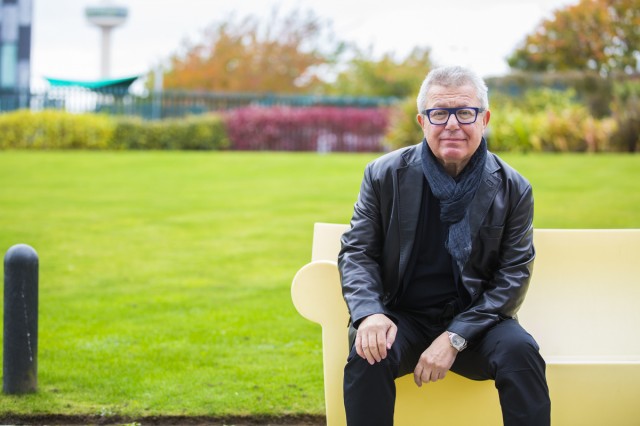
Libeskind’s title for the World Trade Centre site, Memory Foundations, hints at his approach to all new projects. He tries not to be seduced by the physics of the space; instead thinking about its memory, histories, and things that you cannot see or hear. I ask whether these are things that he makes an effort to research before visiting, or if he relies on his first impressions. “You have to know as much history as you can. You have to travel — what did Corbusier say? He was asked, what is architecture? And he said: ‘You have to read a couple of books and travel, that’s all it is.’
Considering, it seems, his creations so far, and giving me a taste of Daniel Libeskind the lecturer, he condenses architecture to its roots. “There’s a truth to it. You have to know something, you have to go places, you have to see how other people live and you have to understand that history is not just local, but it’s interconnected in strange ways around the world, and in a global world particularly, we are not alone where we think we are.”
Alex Croll
Alex met Daniel at the Daniel Libeskind Charity Lecture 2-3.30pm, Friday 23 October 2015 at LJMU School Of Art And Design; raising money for the Red Cross for Syrian Children, and the Talia Trust for Children
Portraits copyright Matt Thomas; Jewish Museum image courtesy Tim and Archikey.com



